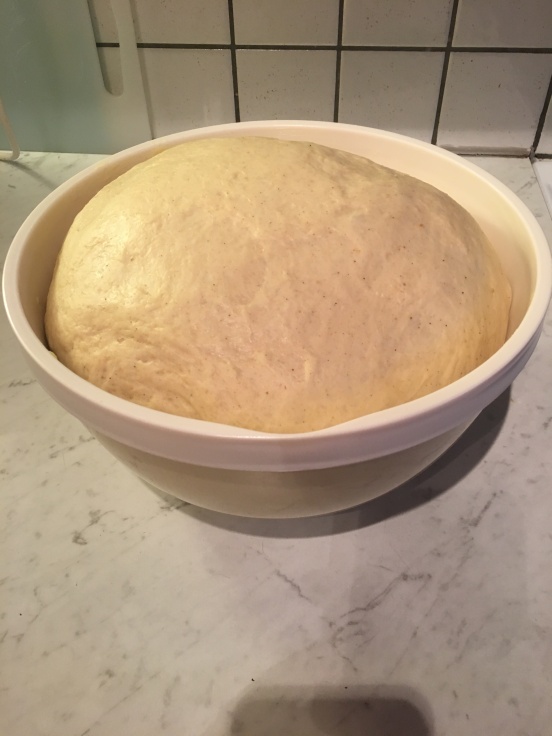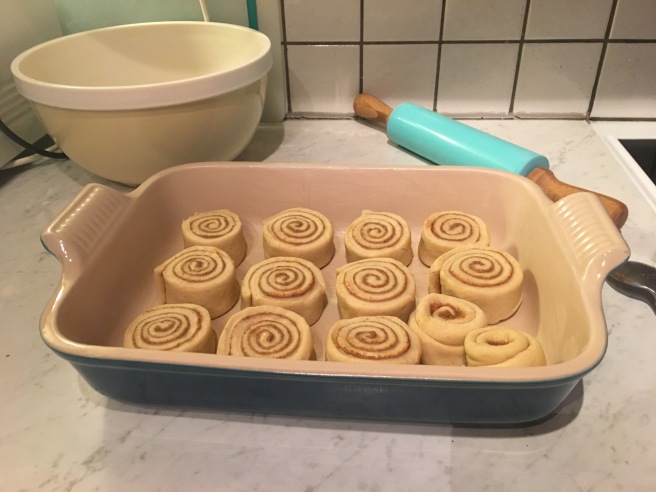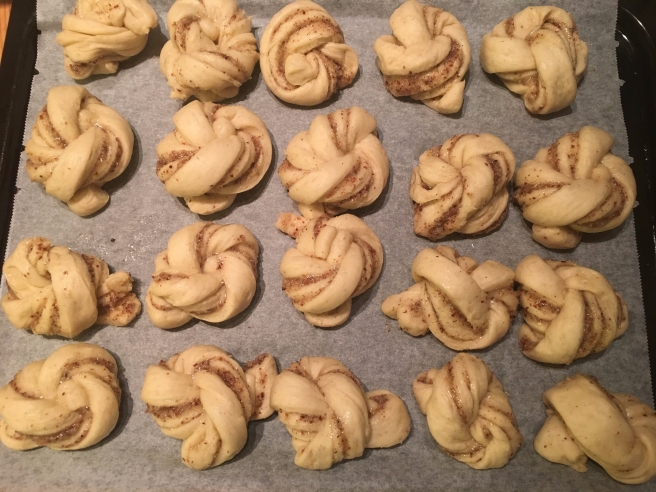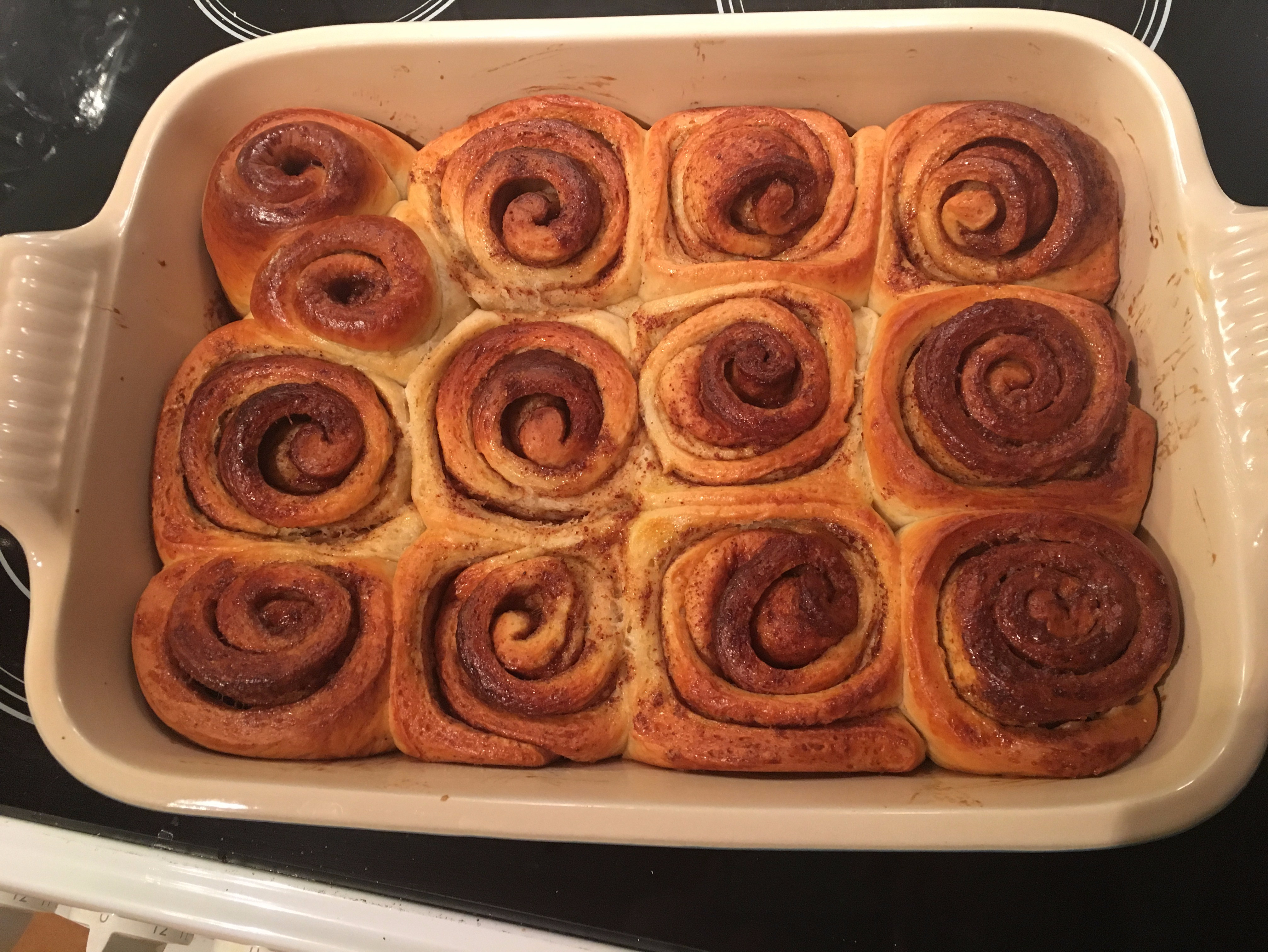Today is Fastelavn in Norway, which is the Sunday before Fat Tuesday. This religious holiday is usually celebrated by eating buns with cream and jam. Such tasty, tasty religion!
As a scientist, I always strive for discovery. Making basic sweet buns is no fun! Also as a scientist, I know Jesus doesn’t care whether or not we make sweet buns (because he ain’t exist, duh). I decided to use the same basic sweet dough recipe, but use it for GREATNESS.
Combine about half a liter of milk, 1 kilo of flour, 150 gr of sugar, an egg, a pinch of salt, 50 gr of yeast (don’t let the yeast touch the salt! They are mortal enemies) and 125 gr of softened butter. Prove the dough until it has at least doubled in size

Much like Jesus (supposedly), IT HAS RISEN! From here, you can do ANTYHING. For this experiment, we divided the dough in half to make two final products: cinnamon buns and almond knots.
For the buns: roll the dough to a huge rectangle. Cover with butter, sugar and cinnamon. Tightly roll the dough into a long tube. Cut into equal sections, about about 6 cm thick. Place the buns in a buttered deep dish for softer, sticky buns – or place the buns on a baking sheet with ample room between each. Prove for another 30-45 minutes.

For the knots: roll the dough out to another huge rectangle. In a bowl, mix grounds almonds, confectioner sugar, a dash of cinnamon and a couple tablespoons of boiling water. Cover the dough with the almond mixture. Fold the dough by bringing one third of the length towards the middle, and doing the same with the opposite side, resulting in three layers of dough. Roll out to desired thickness. Cut strips about 2 cm wide, starting in the short end of the dough. Twist each strip, before tying into a knot. Place on a baking sheet and prove for another 30-45 minutes.

Knots are to be baked at 225 degrees for 10-12 minutes. Same for the buns when baked individually. When using a deep dish, bake for 25-30 minutes at 200 degrees. Remember to marvel at the results!

Look at all this deliciousness! All made possible by yummy chemical reactions! How, you ask? There’s two main things happening. First, there’s gluten. When flour is mixed with water or milk, the gluten in the flour swell to form strands. This is why kneading the dough is critical; developing the gluten to form good, elastic strands of gluten. Then, there’s the magic that happens when you prove the dough: the chemical reaction between sugar and yeast results in ethanol fermentation. First of all, let me tell you a secret: yeast is ALIVE! ALIVE, I SAY! It is composed of organisms that feed of the sugar and break it down, which is called fermentation. This process results in the production of carbon dioxide gas bubbles within the dough, making it light and fluffy. Like tiny helpful yeast farts! But let’s not talk about farts.
Now that you know the science of baking, go forth and multiply! And by multiply, I don’t mean repopulate the Earth, I mean make yummy treats!
Keep in mind that almost every time you eat something delicious, it’s because of SCIENCE!